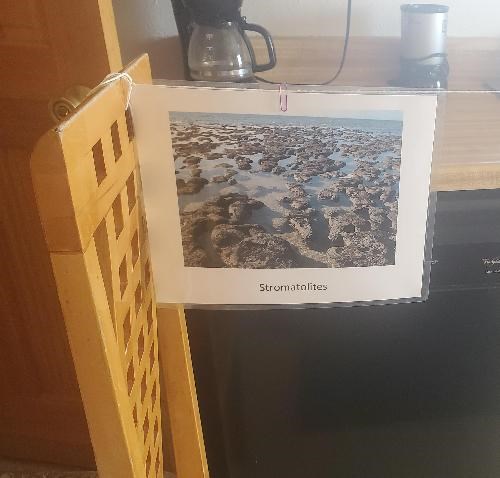
United States Geological Survey Scientists have estimated that the Earth is about 4.6 billion (4,600,000,000) years old! Geologists and paleontologists have made a timeline of the Earth's history called the geologic timeline. This timeline is divided into chunks of time based on fossils we find from each one. These large chunks of time are called eras. Sometimes eras are further divided into periods. The Mesozoic era, when dinosaurs ruled, is divided into the Triassic, Jurassic, and Cretaceous periods. You can look at how the different eras are divided in the geologic timeline shown. You will need:

Florissant Fossil Beds National Monument Instructions:Step One:Find a place to stretch out your string so it is off the floor and straight across. A good option is to tie it between two chairs and move the chairs apart from each other so the string is taut. Your string now represents the entire length of life's history on Earth. You will be arranging the pictures of prehistoric organisms according to when they appear in geologic time. The oldest will be at the left end of the line and the youngest will be on the right. 
Florissant Fossil Beds National Monument For the first billion years of the planet's history, life wasn't yet present on Earth. It was only around 3.6 billion (3,600,000,000) years ago that the first forms of life finally appeared! Colonies of single celled cyanobacteria in the oceans were the first life forms to appear on Earth. They formed algal mats and nodules called stromatolites. Step Two:Clip the picture of the stromatolites to the left end of the string with a paperclip or clothespin. This is when life first appears on your timeline. Step Three:Look at the Prehistoric Species Index. Follow the instructions to mark the important information about each animal. Each species is labeled with the geologic period they lived in. Use this to put them in order of appearance on your geologic timeline. 
Florissant Fossil Beds National Monument Step Four:A key for your geologic timeline is provided below. When you finish clipping all of your pictures to your string, look at the key to check where each species goes. Geologic Timeline KeyThis key starts with the first appearance of stromatolites and moves forward through time to the present day.
New Words!
|
Last updated: August 16, 2022
